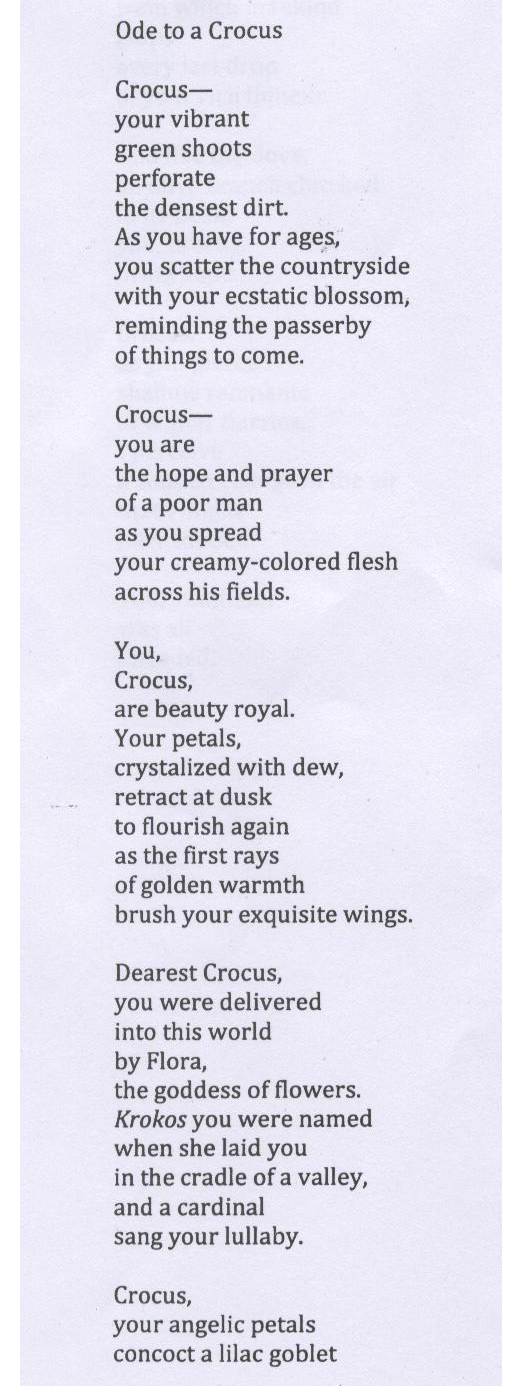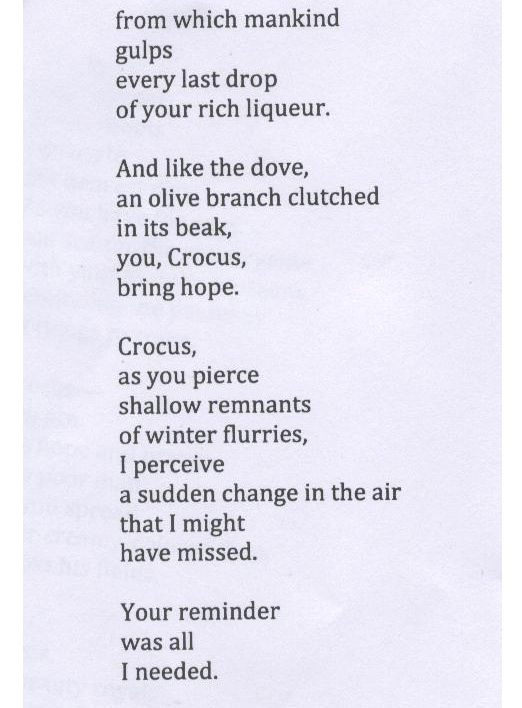2013
SARAH MOOK
POETRY PRIZE RESULTS
6-8 THIRD PLACE
Claire
Dauge-Roth
Edgecomb, ME
  |
|
COMMENTS FROM CONTEST JUDGE MARIE KANE: The American Academy
of Poets defines an Ode as belonging "to the long and varied tradition
of lyric poetry . . . . It can be generalized as a formal address of
praise to an event, a person, or a thing not present." From John
Keats to Mark Doty, from Emily Dickinson to Louise Glück, poets
have honored flowers in their poetry. The third place poem in this age
group, "Ode to a Crocus," is a charming tribute to the crocus
that employs exact verbs, original metaphor, and inventive personification
to honor this harbinger of spring.
Note the exact and imaginative language of "vibrant," "perforate," and "densest dirt." The poet goes on to describe the proliferation and brightness of this flower that "scatters the countryside" with "ecstatic blossom," reminding the "passerby [sic] / of things to come." The flower's impact on humanity continues with specific language in the second section. Here, the crocus is the "hope and prayer / of a poor man" with its "creamy-colored flesh" "spread[ing] / across his fields." In the last three sections, the praise of the crocus becomes more lavish. The flower is "beauty royal" whose "petals / crystalized with dew" "retract at dusk" and "flourish again." In the fourth section, the crocus has increased its value as "Dearest," and the flower's mythology deepens its importance:
The flower's mythic
birth is brought on by "Flora / the goddess of flowers" who
named it "Krokos" or Krokos Kozanis, (Crocus Sativus Linneaus),
which dates back to ancient Greece. In the poem, the flower, like an
infant, is "laid / in the cradle of a valley" while a "cardinal"
sings a "lullaby." The transformation of the crocus as a flower
to worship is completed in the ending tercet: the "angelic"
petals now "concoct a lilac goblet." Thank you for the privilege of reading your work! Marie
Kane |